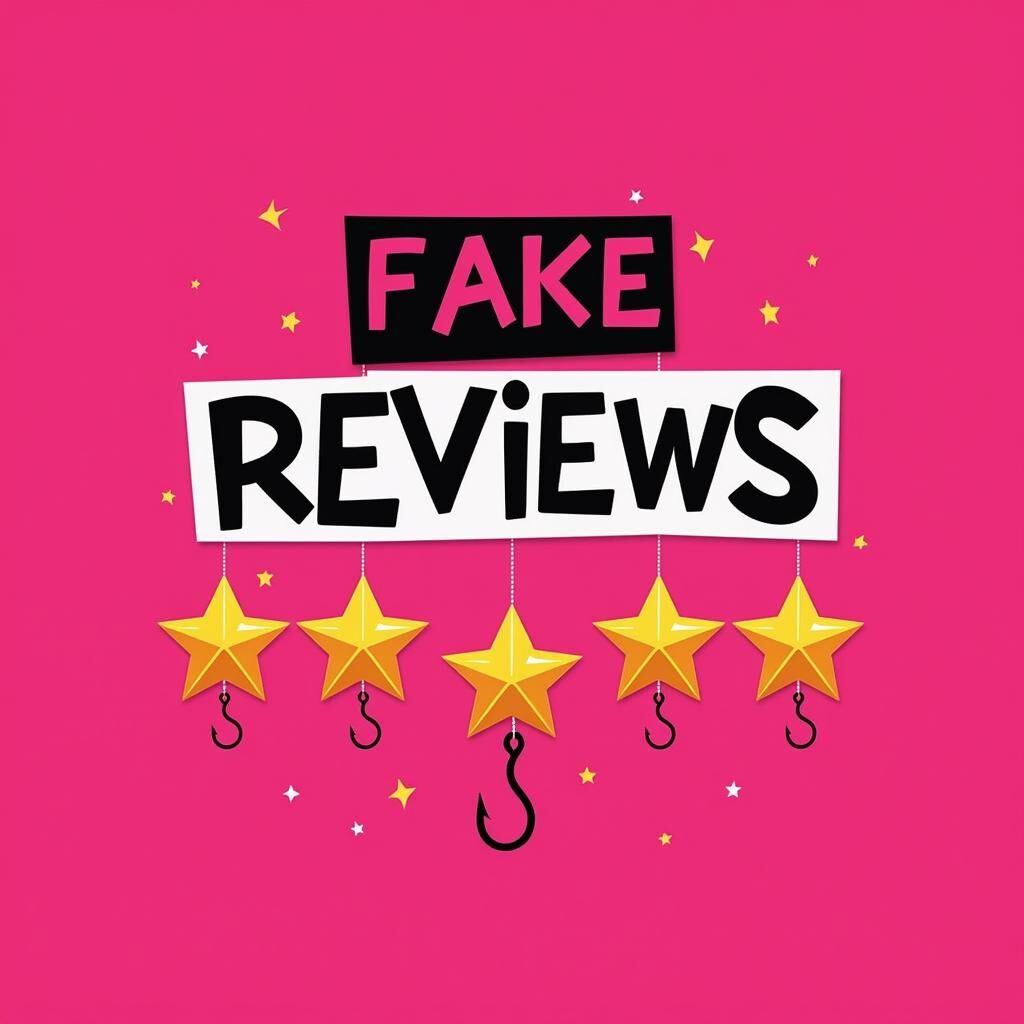
Introduction to the Fake Review Problem
How Fake Reviews Impact Consumer Trust
Fake reviews are eroding consumer confidence online.
Whether you’re buying a gadget or booking a hotel, trust in reviews influences your choices.
When reviews turn out to be fake, it doesn’t just harm the consumer; it damages the credibility of platforms hosting these reviews. Over time, this trust gap pushes people to question the entire ecosystem.
For businesses, fake reviews can swing sales numbers drastically. Some companies manipulate reviews to boost their ratings artificially, while others try to harm competitors. Either way, the result is the same: an unfair marketplace.
The Scale of the Problem in E-Commerce and Review Platforms
Big players like Amazon, Google, and TripAdvisor are constantly battling waves of fake reviews. Research suggests that 1 in 3 reviews online could be fake. With millions of products, services, and locations listed, bad actors have plenty of opportunities to exploit loopholes.
Fake reviews are not limited to five-star praises. Negative, fake one-star reviews can also hurt businesses. This dual threat makes the issue incredibly complex.
How Fake Review Generators Work
AI-Powered Fake Review Generation Tools
AI technology has made generating fake reviews easier than ever. Tools powered by GPT-like models can churn out hundreds of fake reviews in minutes. These tools mimic natural human speech, making the reviews look authentic.
For instance, an AI could write glowing feedback about a product’s durability, highlighting specific use cases. This level of detail makes it hard to detect whether a review is genuine.
Techniques Used to Make Fake Reviews Convincing
Bad actors employ a variety of tricks to bypass detection.
- Human-like writing patterns: AI writes reviews that mirror how people naturally phrase things.
- Diversity in content: Fake reviews vary in length, tone, and focus to blend in with authentic ones.
- Rotating accounts: Bots use multiple accounts to spread reviews across platforms, avoiding detection.
Some fake reviews even include photos or videos, further boosting their credibility.
Examples of Platforms Affected by These Tools
Major platforms aren’t immune. Yelp, Amazon, and Google Reviews are often targeted because of their reach and influence. E-commerce websites in niche markets, like independent bookshops or tech stores, are also frequent victims.
The Role of AI in Fake Review Detection
Overview of AI-Driven Detection Systems
Just as AI creates fake reviews, it also fights back. Platforms now rely on machine learning algorithms that scan millions of reviews for anomalies. These systems look at writing styles, posting frequencies, and user behavior to flag suspicious content.
How Algorithms Identify Patterns in Fake Reviews
Detection algorithms focus on:
- Repetition: Frequent use of identical phrases across reviews.
- Unusual timelines: A surge of reviews within a short period often signals manipulation.
- Account behaviors: New accounts leaving multiple positive reviews for one seller.
With natural language processing (NLP), these algorithms dissect writing styles to find AI-generated patterns.
The Ongoing Arms Race Between Generators and Detectors
As detection improves, so do fake review generators. It’s a classic game of cat and mouse. Generators aim to mimic human quirks, while detectors refine their algorithms to stay ahead. This competition ensures constant innovation in the field.
Challenges in Detecting Fake Reviews
Human Biases and False Positives
AI isn’t perfect. Sometimes it flags real reviews as fake, frustrating genuine customers. A well-written authentic review might look suspicious simply because of its high detail level.
Sophistication of AI-Generated Reviews
Modern fake reviews are so good that even humans struggle to tell the difference. AI has learned to incorporate storytelling, emotions, and unique user experiences, making detection harder.
Limitations of Current Detection Algorithms
Despite advancements, current systems still fall short.
- They struggle with subtlety: some fake reviews are crafted to be only slightly exaggerated.
- They rely heavily on historical data, making it tough to catch newer methods.
The challenge lies in staying proactive rather than reactive.
How Consumers Can Spot Fake Reviews
Red Flags to Look for in Product Reviews
While AI helps detect fake reviews, consumers can also protect themselves. Watch for:
- Overly generic praise: Phrases like “This is the best product ever!” without specifics.
- Timing issues: A sudden spike in positive reviews after negative ones.
- Excessive brand mentions: Fake reviews often overuse the product or company name.
Common Trends in Fake vs. Authentic Reviews
Fake reviews often:
- Lack depth or real user stories.
- Overemphasize product perfection.
- Are overly emotional, either positively or negatively.
Real reviews typically have balanced viewpoints and address both pros and cons.
Tools and Resources for Verifying Review Authenticity
Several tools like Fakespot and ReviewMeta analyze reviews for credibility. These platforms provide a trust score, helping you gauge whether a product’s reviews are genuine.
The Legal and Ethical Implications of Fake Reviews
Regulatory Actions Against Fake Reviews
Governments and organizations worldwide are taking action against fake reviews. For example, FTC guidelines in the U.S. require honest and transparent reviews. Violators, including businesses that post fake reviews, can face fines or legal consequences.
In Europe, the EU’s Digital Services Act aims to combat misinformation, including fake reviews, by holding platforms accountable. These efforts are part of a broader push to maintain consumer trust and ensure a fair marketplace.
Ethical Concerns for Businesses Using Fake Reviews
Relying on fake reviews might seem like a shortcut to success, but it can backfire. Ethical businesses understand that deceptive practices harm their reputation in the long term. Once exposed, companies risk boycotts, loss of consumer loyalty, and possible legal action.
Consumers expect honesty. When brands betray that trust, rebuilding it becomes almost impossible.
Platforms’ Responsibilities in the Fight
Review platforms play a critical role in addressing this issue. They must invest in better AI tools, provide clear reporting mechanisms for suspicious reviews, and educate users on how to identify fakes. Transparency in moderation policies can also build user trust.
Real-Life Examples of Fake Review Scandals
High-Profile Cases in E-Commerce
One of the most infamous cases involved Amazon’s “fake review rings”, where sellers hired individuals to leave glowing reviews in exchange for free products. This practice not only violated Amazon’s terms but also led to significant account suspensions and lawsuits.
Similarly, Yelp faced criticism when businesses were caught offering incentives for positive reviews. Yelp responded with public shaming alerts, highlighting unethical businesses to warn consumers.
Impact on Small Businesses
Small businesses often face challenges due to fake reviews. A competitor might flood a page with false negatives to damage credibility. Conversely, startups may try to inflate their ratings with fake positives. Both scenarios hurt authentic competition and consumer trust.
Lessons Learned from Industry Missteps
These scandals teach businesses the importance of integrity and the dangers of shortcuts. Companies must prioritize honest customer feedback over quick fixes, ensuring they stay on the right side of both ethics and the law.
How AI Could Revolutionize Review Management
AI-Powered Review Moderation
AI isn’t just for spotting fake reviews—it can also streamline the entire review management process. For instance, algorithms can:
- Group similar reviews to identify common customer concerns.
- Highlight actionable feedback for businesses.
- Remove spam or irrelevant comments automatically.
These tools save time while improving the quality of reviews that users see.
Improving Transparency for Consumers
Some platforms are testing verified purchase badges and blockchain-based solutions to ensure review authenticity. These methods give consumers more confidence in the reviews they read.
The Future of Personalized Review Systems
With AI advancements, platforms might move toward personalized reviews. By analyzing user preferences, these systems could display reviews from people with similar tastes or experiences, making recommendations more meaningful.
The Rise of Review Transparency Tools
Popular Tools for Consumers
Tools like ReviewMeta and Fakespot are gaining popularity because they empower consumers. These platforms analyze reviews for patterns indicative of fraud and assign trust scores.
How These Tools Work
- Text analysis: Examining writing patterns to identify AI-generated content.
- Reviewer history: Checking whether an account frequently posts suspiciously positive reviews.
- Weighted scoring: Adjusting product ratings based on the likelihood of fake reviews.
These tools can be integrated directly into browsers, offering real-time analysis while shopping.
Limitations of Review Transparency Tools
While helpful, these tools aren’t perfect. They sometimes misclassify genuine reviews or fail to detect cleverly written fakes. Consumers should use them as a guide but not rely solely on them for decision-making.
Consumer Behavior in the Age of AI Reviews
How Fake Reviews Shape Buying Habits
Studies show that 92% of shoppers rely on reviews before making a purchase. Fake reviews, therefore, directly influence consumer behavior. Products with inflated ratings often sell better, even if they underdeliver.
This manipulation creates a ripple effect where consumers become more skeptical of all reviews, even legitimate ones.
Building Trust in the Digital Age
To combat skepticism, businesses can focus on transparency. Verified reviews, responses to feedback, and visible efforts to address concerns help rebuild trust. Companies that value authenticity will thrive in the long term.
The Role of Word-of-Mouth in the AI Era
With increasing doubts about online reviews, word-of-mouth recommendations are making a comeback. People are turning to trusted friends and social media influencers for advice rather than relying solely on platforms.
The Future of Fake Review Detection
Advancements in AI for Detecting Fakes
The future of fake review detection lies in cutting-edge AI tools that can go beyond simple pattern recognition. Deep learning models, for instance, are being trained to spot subtle nuances in language, such as tone, phrasing, and contextual relevance, which even sophisticated fake reviews fail to mimic.
Emerging technologies like Generative Adversarial Networks (GANs) are being used to simulate fake reviews for training detection algorithms. By challenging systems with near-perfect imitations, these tools push detection models to become smarter and more accurate.
Real-Time Review Authentication
Soon, AI could verify reviews in real-time, flagging suspicious entries as they’re posted. Platforms may implement authentication methods like facial recognition for video reviews or require more robust identity verification to ensure only genuine customers can leave feedback.
Blockchain technology also holds promise for secure review tracking, providing an immutable record of who posted what and when.
Collaboration Between Platforms and Regulators
As the fake review problem grows, collaboration between platforms and regulators will be crucial. By sharing data and research, platforms like Amazon, Yelp, and TripAdvisor can collectively improve their detection capabilities. Regulatory bodies could also impose stricter penalties on businesses and individuals caught manipulating reviews.
Ethical AI: Balancing Detection and Privacy
Ensuring Consumer Privacy
While AI detection tools become more advanced, protecting user privacy remains critical. Algorithms need access to user behavior data to spot suspicious patterns, but excessive monitoring could infringe on personal rights. Striking the right balance between effective detection and ethical data use will be essential.
Platforms should focus on anonymized data analysis, ensuring that users’ private information remains secure. Transparent privacy policies can also help alleviate concerns.
Avoiding Algorithmic Bias
Detection systems are not immune to bias. They might unfairly target certain groups or overlook fake reviews written in less common languages. AI developers must actively work to minimize these biases by incorporating diverse datasets and regularly auditing their models.
The Role of Human Moderators
AI can’t do it all. Human moderators will remain important for complex cases where algorithms fall short. Combining AI’s efficiency with human judgment ensures a more balanced and fair review system.
Impact on E-Commerce and Consumer Behavior
A Shift Toward Quality Over Quantity
As fake review detection improves, platforms may prioritize quality over quantity. Instead of showcasing products with the most reviews, algorithms might highlight those with consistent, detailed, and verified feedback. This shift would encourage businesses to focus on customer satisfaction rather than manipulation.
Enhanced Consumer Confidence
Stronger detection systems will help restore consumer trust in online reviews. When shoppers feel confident about the authenticity of feedback, they’re more likely to rely on it for decision-making. This trust benefits both consumers and honest businesses.
The End of Fake Review Dependence
Over time, the reliance on fake reviews to boost sales may diminish. As detection systems improve and penalties for violations increase, companies may find it more beneficial to invest in better products and services rather than gaming the system.
How Businesses Can Stay Ahead
Embracing Authentic Feedback
The most effective way for businesses to protect their reputation is by encouraging genuine customer reviews.
- Offer incentives for honest reviews, such as discounts or loyalty points.
- Engage with negative feedback constructively to show commitment to improvement.
By fostering authentic connections with their customers, businesses can build long-lasting trust.
Leveraging AI for Review Management
Businesses can also use AI tools to manage reviews effectively. Sentiment analysis tools can help identify trends in customer feedback, enabling businesses to address issues proactively.
Building Transparent Review Policies
Transparency is key. Clearly outlining review policies—such as how reviews are verified and moderated—builds consumer confidence. Businesses that openly address the fake review issue show they prioritize integrity.
Looking Ahead: Can Fake Reviews Be Eliminated?
The Challenges of Complete Elimination
Eliminating fake reviews entirely may be impossible. As technology advances, so do the tools for generating fake content. However, consistent innovation in detection methods can significantly reduce their prevalence.
Platforms must stay vigilant, continuously updating their detection systems and enforcing penalties to discourage bad actors.
The Role of Global Cooperation
Tackling fake reviews requires a global effort. Unified guidelines across regions and platforms would create a more level playing field, ensuring businesses worldwide adhere to the same standards.
A Better Digital Marketplace
The ongoing battle between fake review generators and detection algorithms will shape the future of e-commerce. With the right tools, strategies, and cooperation, a fairer, more trustworthy digital marketplace is within reach.
Conclusion
The war between fake review generators and detection algorithms highlights the double-edged nature of AI. While bad actors exploit AI to manipulate reviews, the same technology offers powerful solutions to counter these threats.
Consumers, businesses, and platforms all play a role in this battle. By staying informed, embracing transparency, and leveraging cutting-edge tools, we can create a digital ecosystem where trust prevails over deception.
Resources
Articles and Reports on Fake Reviews
- FTC Guidelines on Fake Reviews
The Federal Trade Commission outlines rules and penalties for businesses and individuals involved in fake review schemes. - How Fake Reviews Influence Consumer Behavior
An in-depth article by BBC explaining the psychological impact of fake reviews on consumer trust and purchasing decisions. - The Rise of Fake Reviews and How to Fight Them
Wired explores the growing sophistication of fake reviews and the latest detection technologies.
Tools for Analyzing Reviews
- Fakespot
A popular tool that analyzes product reviews on major e-commerce sites like Amazon and provides trust scores. - ReviewMeta
This platform evaluates Amazon reviews for authenticity, offering insights into possible manipulation. - TrustPilot
A widely used review platform that enforces strict guidelines to ensure transparency and authenticity.
Research Papers on AI and Fake Reviews
- “Detecting Fake Reviews Using Natural Language Processing”
This paper highlights the use of machine learning models in analyzing linguistic patterns in reviews. Available on arXiv. - “The Impact of Fake Reviews on E-Commerce”
A detailed academic study on the economic consequences of review manipulation. Access via JSTOR. - “AI Arms Race: Generative Models vs. Detection Algorithms”
A technical exploration of how GANs are used for both creating and combating fake content. Found in the AI Journal.
Consumer Guides
- Spotting Fake Reviews: A Consumer’s Guide
A guide by Consumer Reports that teaches readers how to identify red flags in reviews. - Amazon’s Review Policy Updates
Amazon regularly updates its review moderation policies. Their transparency reports provide insights into detection efforts. - Better Business Bureau
The BBB offers resources on ethical practices and tips for identifying misleading reviews.
Video and Podcasts
- “How Fake Reviews Work” (YouTube)
A documentary-style video that visually breaks down fake review schemes and detection strategies. - The Dark Side of AI: Fake Reviews (Podcast)
A podcast episode featuring interviews with AI experts and ethical watchdogs. Available on Spotify and Apple Podcasts.





